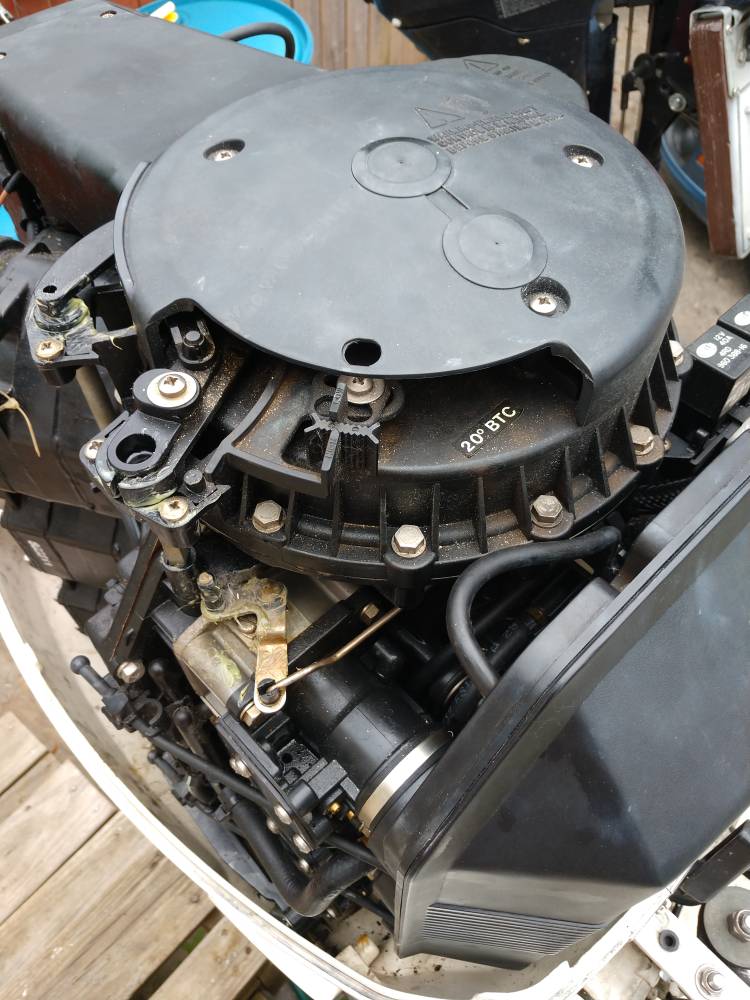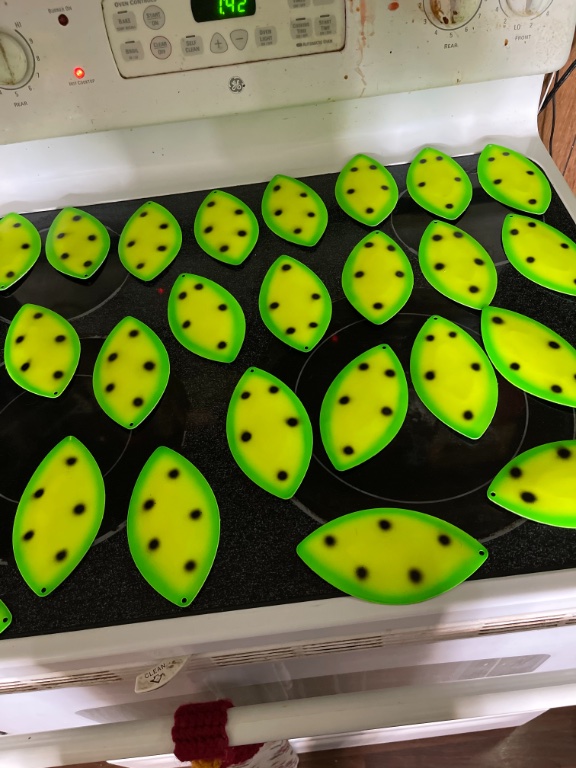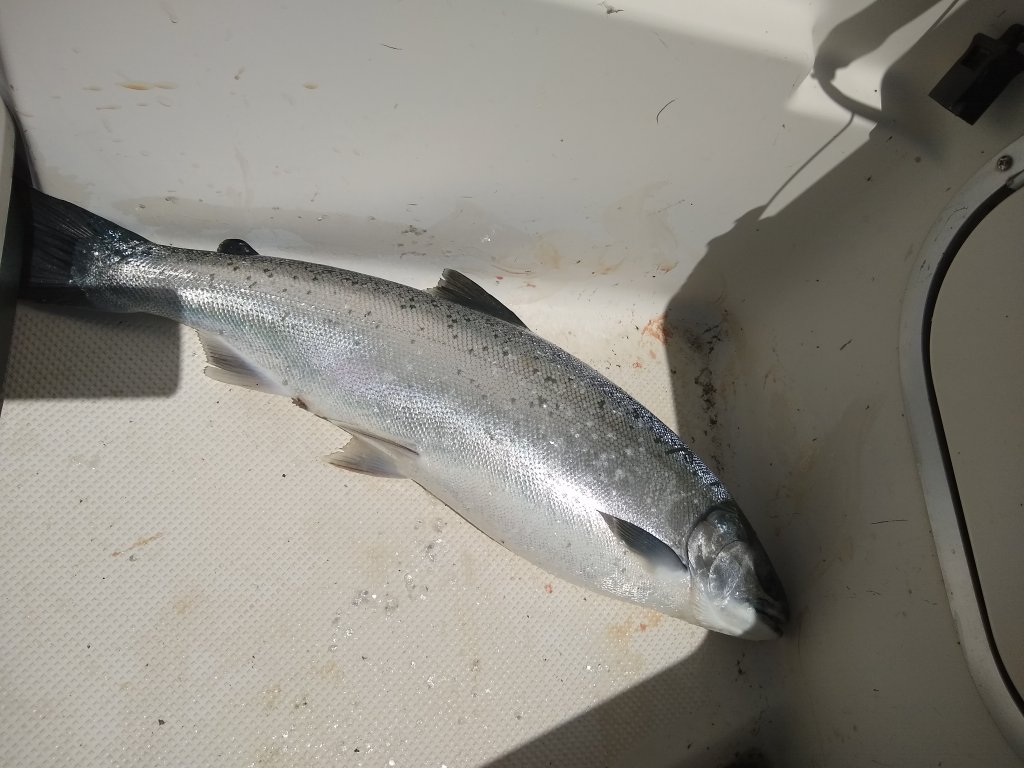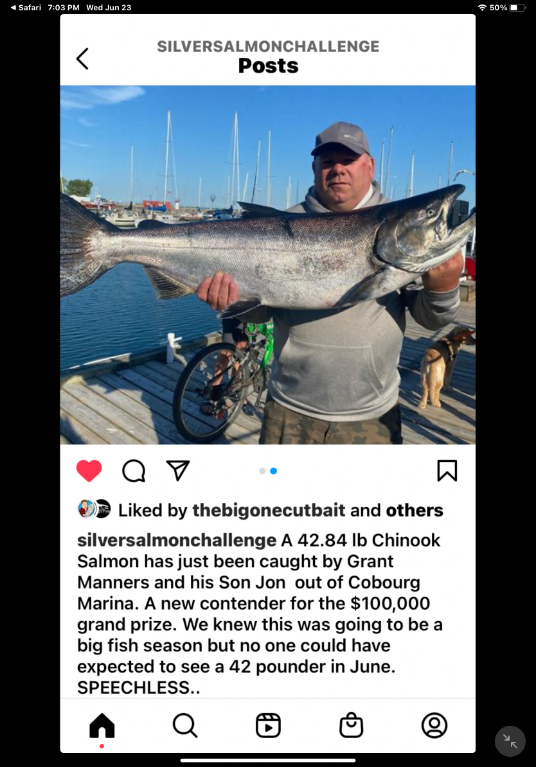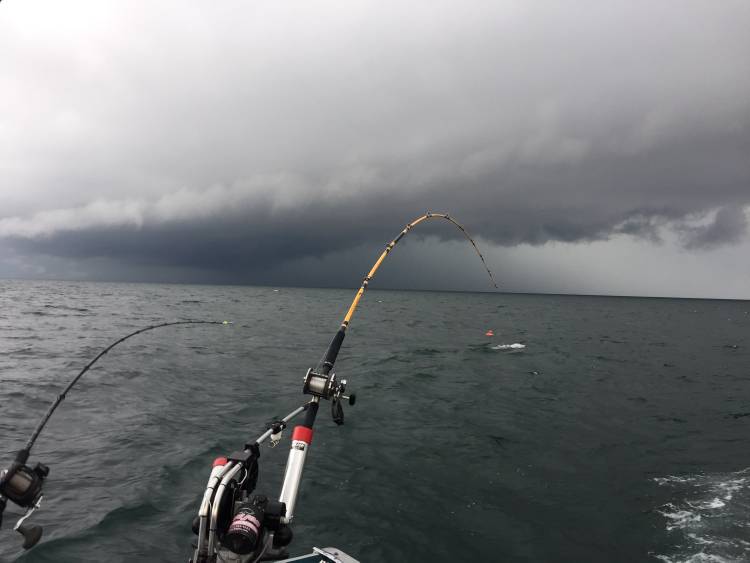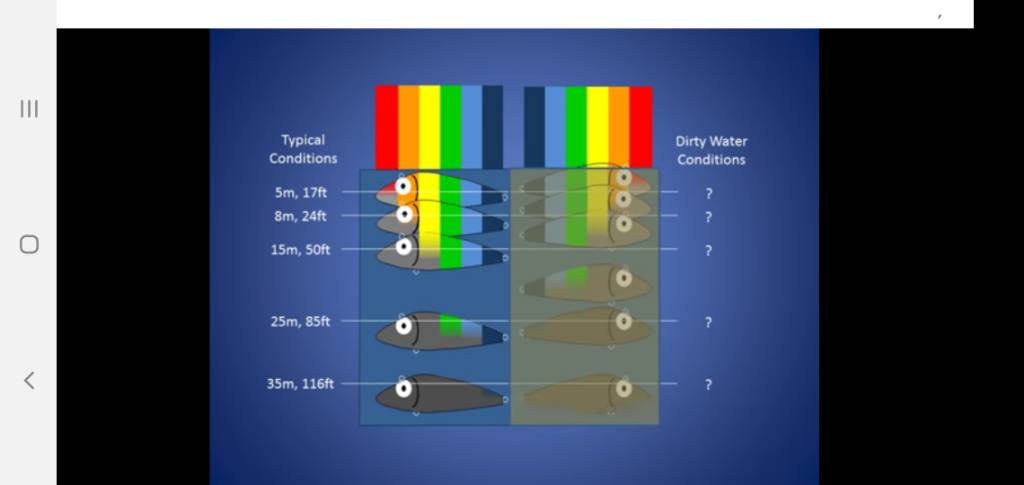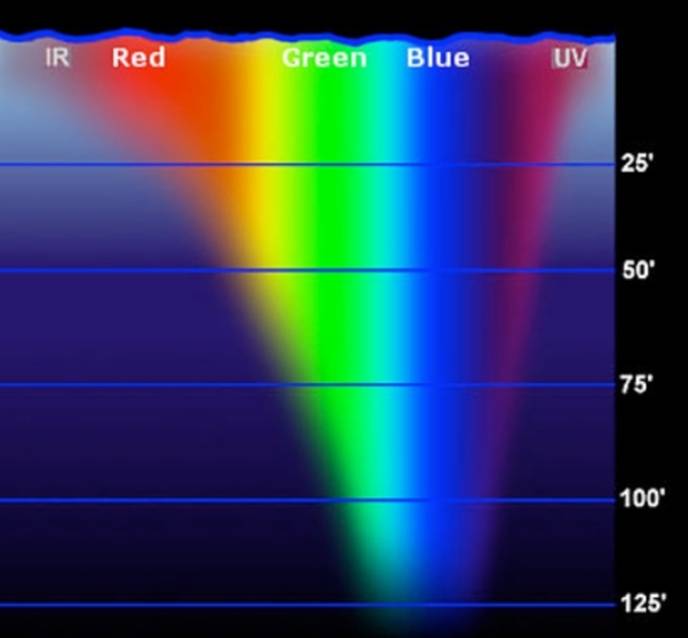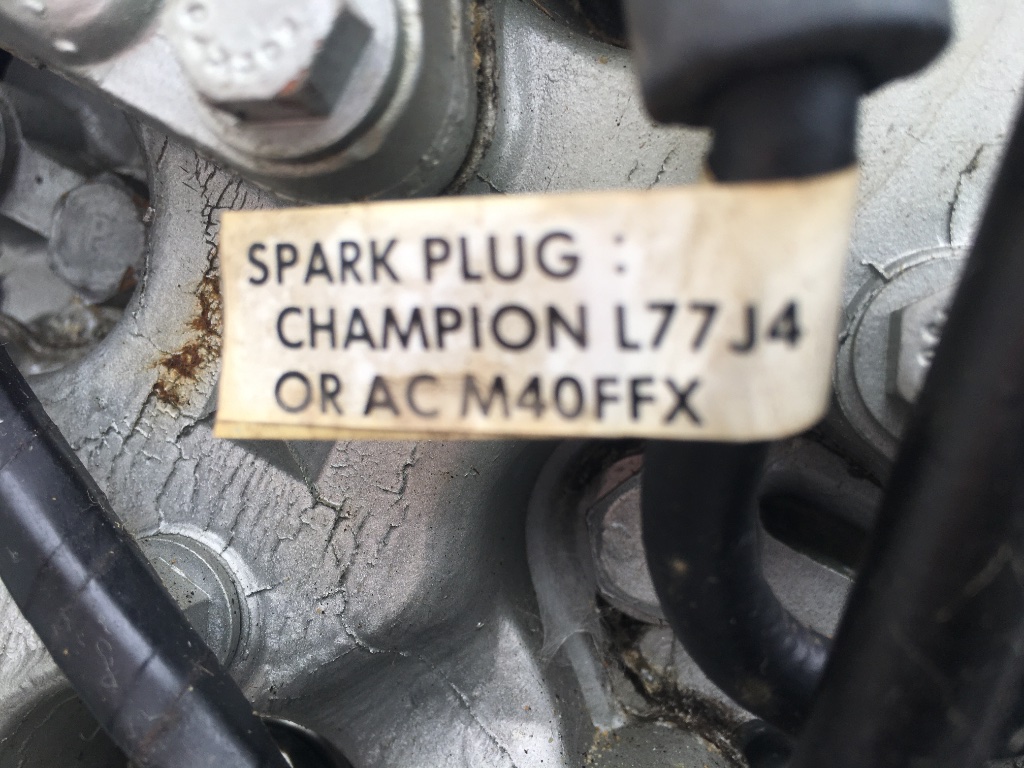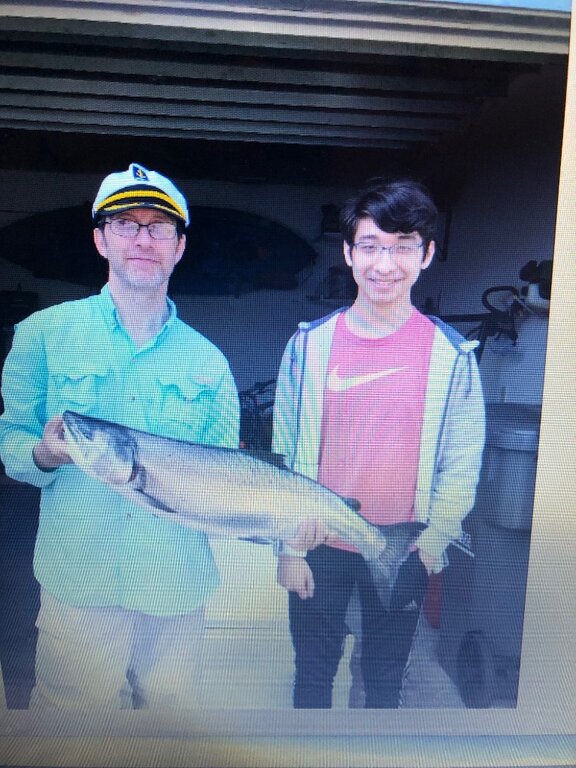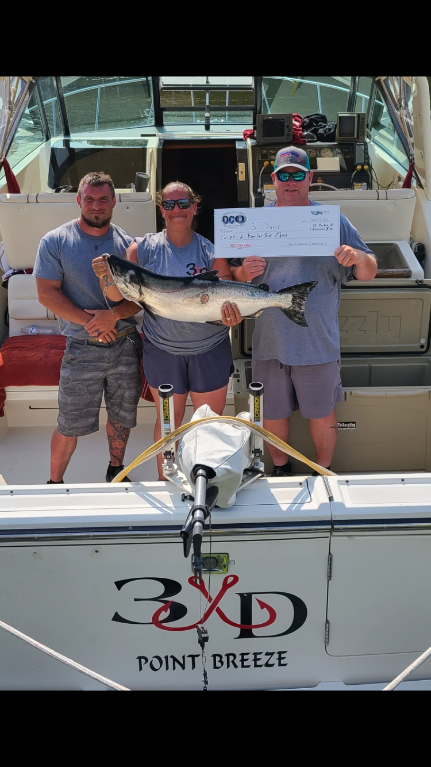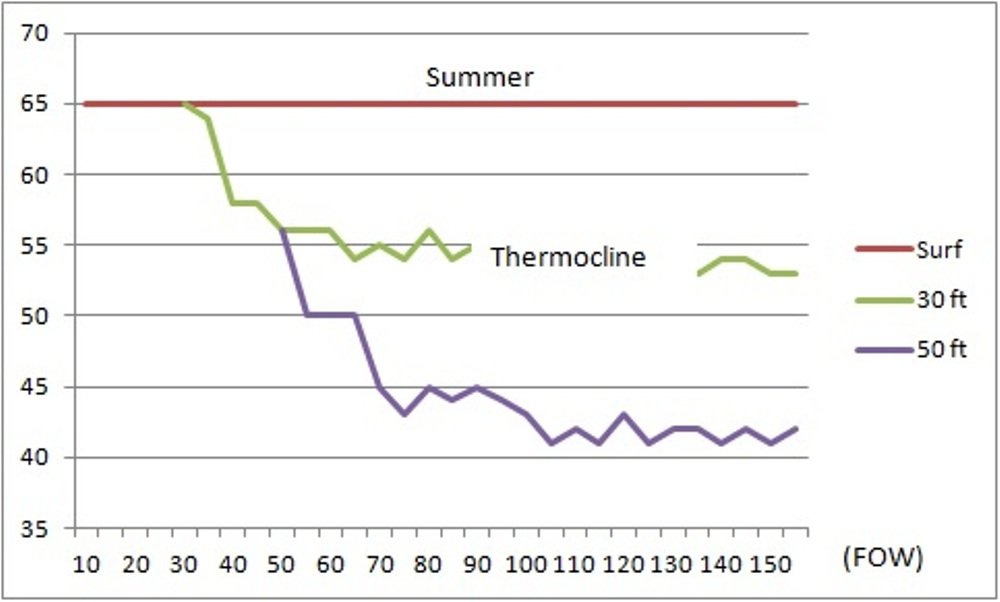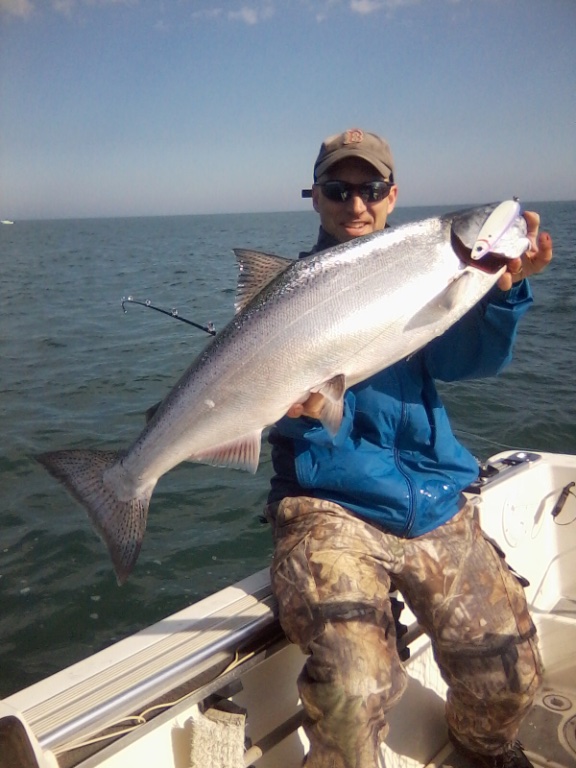

LongLine
Professional-
Posts
3,873 -
Joined
-
Last visited
Content Type
Profiles
Forums
Events
Gallery
Store
Everything posted by LongLine
-
-
-

Ever Tip a Trolling Fly with Artificial Bait?
LongLine replied to Super G's topic in Tackle and Techniques
Run behind a dodger/flasher. Never heard of anyone around here tipping them. Tom B. (LongLine) -
Did it once......never again! Tom B. (LongLine)
-

Bear creek 6/25 circus
LongLine replied to dhhurlburt's topic in New York Fishing Reports - Lake Ontario (South Shore)
Those were the days! Hope you took a lot of pictures. Just wait till one time out & one of the boys says" "Here Dad, you take it,,,it's a little one." Tom B. (LongLine) -
A sustained South wind (along the south shore) generally pushes warmer surface water out and colder bottom water usually comes in towards shore. Tom B. (LongLine)
-
yep, they're showing up. Suggest when you're reeling in and lure is about 30-35 ft from boat, lower your rod tip into the water and zip it upward as fast as you can. Usually cuts the majority of them off. (Not suggested to slap the water with the rod....unless you want a broken rod) Tom B. (LongLine)
-

I-Bay 6/20
LongLine replied to BreakingBass's topic in New York Fishing Reports - Lake Ontario (South Shore)
-
-
-

What do you Run off planer boards?
LongLine replied to garrymny's topic in Questions About Trout & Salmon Trolling?
The simplest thing to do is to just run plugs with some decent size keel sinkers. Tom B. (LongLine) -

Need some advice please!
LongLine replied to WebsterWaters's topic in Questions About Trout & Salmon Trolling?
Your cable picture tells me your down speed is very high. Rather than trying to go with or against currents, try going across the general current. i.e. N-S troll. The rods in your pix aren't nearly loaded enough. With one rod out, try putting your boat in neutral & observing the tip. If all the rod bend comes out, then load the rod more. Agree with JD, ditch the fish icons. Seaweed, flotsam & other crud will show up as fish, which will drive you nuts. Good luck. Tom B. (LongLine) -

Lure color and depth recomendations
LongLine replied to hondo573's topic in Questions About Trout & Salmon Trolling?
I never fish just one depth. I believe in the the theory of "1-above, 1-in and 1-below." (not just referring to thermocline) As a general rule, all will have some color in common. i.e all have some variation of green, or all some variation of Blk/silver, or all some variation of orange, etc. Fish for a little bit, then change to different group. I keep doing it till I find what they want that day. -
-
Apparently each Sanctuary has an advisory committee that sets the rules & makes recommendations to NOAA. Big-O committee has reps from: Tourism, Shoreline owners, Rec. fishing, Rec boating, Maritime history, Education Economic development (which is the one I worry about), Divers clubs & 'citizens at large." NOAA and NYS would have to agree to regulations and share management of the area. Appears they're looking for input to determine their recommendations. So Okay, here's some: Appears the purpose is to protect Maritime history. i.e shipwrecks cannot be disturbed in any manner. Regards fishing: you can't anchor near a wreck, can't entangle a net on one. I imagine it would be frowned upon if you hit one with a downrigger ball. Regarding windmills: According to the Federal Register and 71 FR 4898 (pgs 4898=4903) "Continued presence of commercial submarine cable beneath or on the seabed" is prohibited UNLESS a Special Use Permit (SUP)is issued. As I see it, basically a SUP can be issued as long as Maritime history is undisturbed; enhances education and research; or provides "public benefit". ("Public benfit" has always been controversial in NYS) Stellwagen Bank Sanctuary (in the ocean off Mass.) was issued an SUP for its cables, albeit fiber optic cables. I don't know much about Thunder Bay or the proposed one in Michigan. Also Re windmills, I imagine foundations and maintenance of them and the cables would be problematic, especially as many of the shipwreck sites are unknown. Foundations are huge. We all know there are some fantastic currents in Big-O. What effect would a multitude of foundations have on the currents & silt deposit on Big-O? We all know that some silt from the Genny ends up in Henderson. What effect would it (disruption) have on the shipwrecks? NYSDEC, USGS & Army Corps have all dodged the question of currents and temperature regimes on Big-O, in the past. In addition, other questions I have (that'll probably be dodged): what effect does plan 2014 have on the sites? Shouldn't the water level be tightly regulated for better preservation? How about the freighters? Shouldn't their ballast regulations be tightened? They already brought in Quaggas & Zebras which are covering many sites in Big-O. What else are they going to bring in? (Feds already messed that up by disallowing NYS freighter ballast regs a few years ago) I'd prefer the entire south shore be a sanctuary provided Recreational salmon/trout fishing (rod/reel) continues as is, no SUP ever issued for windmills, water levels better regulated, & ballast laws be revisited. Guess my rant is over. Tom B. (LongLine)
-

I-Bay 6/20
LongLine replied to BreakingBass's topic in New York Fishing Reports - Lake Ontario (South Shore)
-
-

Father's Day at Sandy Ck
LongLine replied to Ric66's topic in New York Fishing Reports - Lake Ontario (South Shore)
-
ijc.org/en/loslrb/watershed/forecasts Check out the above link. Looks to me like forecast says it may stay the same or a little below where it is now. I know they reduced out flow to something like 7.6K but I don't think that's low enough to really help raise level much. (I'm sure shippers are liable to start complaining pretty soon) Tom B. (LongLine)
-
Scott - as long as you have them installed correctly - trust your electronics. Just some thoughts: The main driver of river current is the elevation change between upstream & down stream plus how much water is draining into the river. Also the water in the center is generally moving much faster than along the shore. (however it may be more turbulent along the shore) The main driver is of Big-O mixing current has to be the wind, which goes all over the place, even though we live in the "Prevailing Westerlies". Check the wind maps. I've seen NW winds at Olcott, and South wind at the Genny at the same time. I've also seen strong SW winds produce 6 ft white caps off the Oak yet the Genny area be calm due to the Braddocks area acting like a topographical wind barrier. (i.e. The Genny is in a cove) The degree of mixing has to be different. (Why do fishermen travel west during mid/late spring? That's where the fish are. Why are the fish there? IMO, water temps are more stable). Yes, I've seen/experienced multiple "sub-surface" currents. (I learned long ago not to use pancake weights on Big-O) Big-O has a natural "Double gyre" i.e typical currents (negating winds). The 1st starts at Niagara and flows along the S shore. It turns and flows counterclockwise around the Salmon River area. The 2nd starts at Niagara and flows along the Canadian shore. However this 2nd one gets about 2/3 of the way to the St Lawrence and then the doubles back in a clockwise direction. (Meets the 1st current head-on) Interestingly there is generally a south bound current near the Scotch Bonnet Ridge that generally hits the S shore near Sandy/Hamlin area. Winds, especially anything out of the east, can mess this up. I believe the lakes' bottom topography can sometimes affect the mixing of temperatures. I.e. With a strong south wind cold deeper water moves towards the south. Where the bottom is generally flat (like at Rochester) there's no "barrier" to its movement. (other than the warmer shallows) At the Oak, where you don't have to go nearly as far offshore to find the same depth of water as you do off Rochester, the steeper bottom gradient has to deflect some of that cold water upwards. (look at how fast the deep water temp gauge changes off Rochester - one day it's 58F & next day can be 44F) I don't know, (and I'm not going to count) but I'd be willing to bet that more little alewife died (per unit of shoreline) along the flat bottom area (say from Braddocks to Ginnea) than anywhere else. Lastly, currents in winter are much faster in winter than in summer. Why? Lake is not getting nearly as much direct sunlight (hence heat) and remember "Gales of November". i.e Big waves & strong winds. Luck to all, Tom B. (LongLine)
-
Interesting paper. However doesn't explain why the temperature change. Here's my take on it (from many yrs of fishing Big-O around Rochester.) Big-O in the Central area is very dynamic. We all know in late winter to early spring the entire lake is basically 40F - top to bottom. After a while a Thermal Bar sets up & moves off-shore. (Temp on inside may be 50F and outside may be 39F and only lasts a week or 2.) We also know that much later in the summer a Thermocline sets up where surface temp may be 65F but a fairly consistent band of 54F water can be found at a certain depth. (We all love to find where 54F hits the bottom.) However, there's a transition period, typically in mid/late May to mid/late June. This is when the charters all head off-shore for their fishing. i.e. 250 FOW plus. Fishing for us recreational fishermen becomes real tough. Thank Heavens for graduations, little league, Father's day, weddings...(well maybe not weddings) Anyways, Big-O is very dynamic, and I don't mean just in terms of the changing winds and cloud cover. I'm talking currents. Some days on a S-N troll, your GPS says 2.5 mph but down speed is 3.7. 15 minutes later they match at 2.5. Then it changes again. Other days I've seen the same thing on an E-W troll. There's generally an easterly current along the south shore but that's not always true. (Niagara is obviously different than Rochester) I generally troll S-N and a number of years ago I noticed something interesting during Transition on my down temperature probe. Namely, during this "Transition" period, there are drastic temperature changes at depth. Not smooth at all. (And yes, I have had the unit checked.) For example, going N at 2.5 GPS with surface at 60F and probe down 30 feet, down temp reads 60F. Then a couple minutes later 45F, couple more minutes 58, then 40. Kind of like the unit goes whacky. Then all of a sudden the temp reading goes steady as I continue north bound and it stays steady. The 1st time this happened, I changed battery, cable, antenna & rewired connections. Couple days later when I got back out, same thing happened so I pulled the entire unit & sent back to factory. They returned it saying the unit was fine. So here's my theory: During Transition, there's a band of water depths where the temperature is very unstable. Some years it may be from 70 FOW to 110 FOW, others, like this year it may be 50 to 180FOW. The lake does not mix or stratify evenly due to currents and heating. Ever notice those perfectly calm surface areas adjacent to a streak where there are some small waves? I guarantee there's a temperature difference between the two areas. Ever notice, some guys love to fish after a strong south wind - they say the warm inshore water gets blown out to the deep water & helps settle thing down. Also, ever notice that some guys hate a strong NE wind? (That really messes with water temps.) Anyways, this is what I've observed graphically over the years. (I picked temps & FOW just to illustrate irregularity) the first is a profile of the Thermocline. Second is the Transition Period. Back to the Alewife: These irregular temperature changes are below the surface and they appear to be in dynamic motion as the lake mixes and tries to setup due to the various currents. This is the Transition Period. The cold spot at 50FOW today may be at 30 FOW tomorrow or in a couple hours. Alewife are not great swimmers and could very easily get caught in rushes of cold water. Alewife spawning just happens to coincide with the Transition Period. Remember, this is all happening well below the surface. My advice is to keep going North when you encounter these temperature conditions. (Just like the charter guys who found out that in June, you have to go deep.) Luck to all, Tom B. (LongLine)
-
-
3M marine adhesive 5200.

